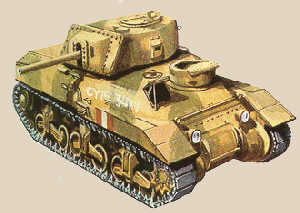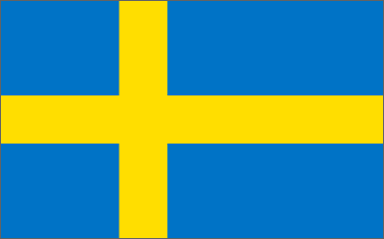

Sentinel
Weight : 28.5 ton
Dimensions:6.33 x 2.77 x 2.57 mt
Armor (max) : 65 mm
Range : 320 km
Speed (max - route) : 48 km/hr
Main gun : 2-pounder (40mm)
Crew : 5
Not only Panzers...please !
 |
 |
Sentinel |
| By mid 1940 the Japanese threat to Australia was so serious that the
Australian government began a crash rearming program. Since tank supplies from United
Kingdom would be unlikely, as the British had to take care of a not less serious problem
(i.e. a possible German invasion), it was then decided to develop tanks locally. The result was a remarkable tank known as the AC1, or Sentinel, which combined drive components supplied by British technical advisers, with locally developed hulls, suspensions, chassis and engine. The Sentinel featured a cast one-piece hull and cast turret and was powered by a combination of three Cadillac petrol engines driving a common drive shaft. The first Sentinel was completed in January 1942 but the production ceased in July 1942, after only 66 had been built, since by that time it was clear that the US tank arsenals would be able to meet all future Australian demands. |
 |
 |
Ram |
| When Canada entered the war it had only a small army and virtually no
tanks. All they were able to obtain were a few American tanks left over from WWI. It was
then decided to start with a domestic production. The result was a turreted tank based on M3 Lee components, combined with a Canadian cast steel hull and turret. The Ram shape was very close to the M4 Sherman but its main drawback was its weak armament. The first Rams entered service by the end of 1941 but they never saw action as, by the time they were ready, the American tank arsenals were already supplying sufficient heavier-armed tanks to meet the needs of the allied countries.. The Rams, by removing their turrets, were later converted to armoured personnel carriers (Ram Kangaroo) - the first of their kind - and saw active service in Europe during 1944 and 1945. |
 |
 |
LT-38 |
| The LT-38 was destined to become one of the most widely used of
the Czech tanks ... although not in Czech hands. Production started in 1938 as improvement
of the previous LT-35 light tank. After the German take over, the LT-38 was retained in production until 1942 by the Germans with the name of PzKpfw 38(t) ("t" stays for "tscheche" or "czechoslovakjian"; over 1400 were built under German "supervision". It was widely used in France, North Africa, and Russia, but when its utility as a light reconnaissance tank was overtaken by the need of heaviery armour and better armament, the LT-38/PzKpfw 38(t) was subject to major modifications. It was then transformed in 20 mm Flak cannon, 150 mm howitzer, 75 and 76.2 mm anti-tank gun. Amongst the various conversions the best was, perhaps, the Hetzer tank destroyer. |
 |
 |
Turan 40M-1 (M-2) |
| The Turan M was developed from Czech
Skoda designs which the Germans had "collected" in their take-over of
Czechoslovakia and then handed to the Hungarians for their use. Total production amounted
to some 300 Turan 1s and to some 322 Turan 2s. As the Turan M tanks were no match for Soviet armour, they were replaced, from 1943, by German tanks. |
 |
 |
Stridsvagn M.42 |
| Even if neutral, Sweden continued to build armoured vehicles which,
during WWII were sold to various countries, specially to Hungary. This AFV, developed
since 1942, was powered by a 380Hp VOLVO engine. Due to its good quality, the Stridsvagn production went on for more than 20 years after the war ended. |
 |
 |
Light Tank 7TP |
| Developed from a Vickers-Armstrong tank, the 7TP was later
licence-produced in Poland (from 1934 onwards). In 1937 the 7TP was equipped with a 37mm Bofors anti-tank gun. In 1939, when the WWII was ignited following the German invasion of Poland, the 7TP looked rather dated but was, however, a match for German Panzer I and II. After the surrender, the German Army used as many 7TP as they could, mainly for occupied countries internal policing. |
![]()
![]() I'd be
delighted if you filled one page of my Guestbook
and let me have your comments
I'd be
delighted if you filled one page of my Guestbook
and let me have your comments
![]()
![]() Back to Klisura69
homepage
Back to Klisura69
homepage
Acknowledgment
All the color images (by G.Canestrari) and information have been selected from the "I
Corazzati" book by B.Benvenuti, edited by A.Mondadori - 1976). They are property of
the authors
Page established on : March 4, 1997
Last update : January 20, 1998
This page is maintained by Mario Paesani .....the webmaster !
This page hosted by ![]() Get your own Free Home Page
Get your own Free Home Page